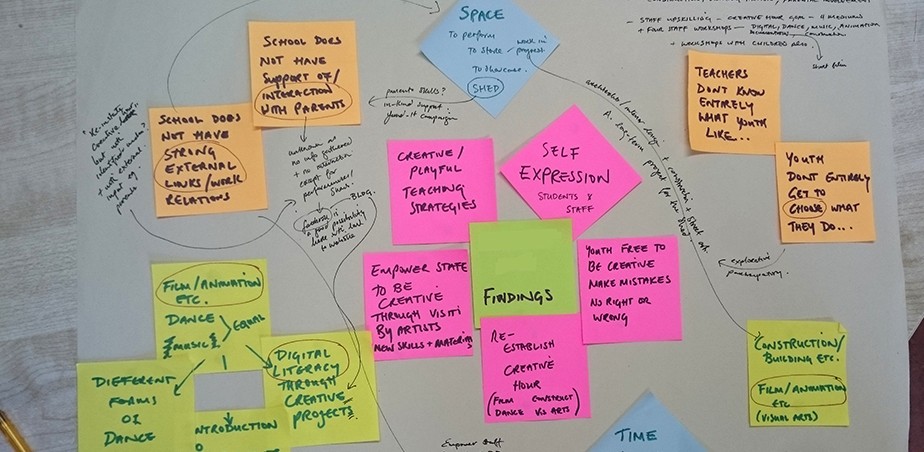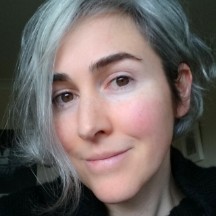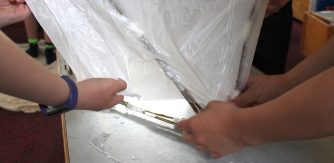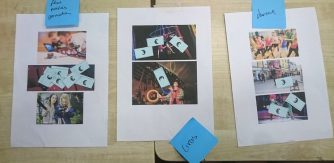Blog 2 – Yvonne Cullivan Creative Associate for Creative Schools & Visual Artist

Image copyright Yvonne Cullivan Findings Mindmap

Yvonne Cullivan is a visual artist and educator based in the West of Ireland. She has fifteen years experience in Fine Art practice, Arts Education, Public & Participatory Arts and Arts Management. She holds a B.A. in Fine Art from Crawford College of Art and Design, Cork, and an M.Sc. in Multimedia from Dublin City University. Yvonne is a Lecturer at the National College of Art and Design, Dublin, on the First Year Fine Art & Design Programme and in the Fine Art Media Department. She is also currently engaged as a Creative Associate with the Creative Schools Programme.
Working across a broad range of documentary-style media, including sound, video, photography, interview/conversation, drawing and writing, Yvonne's practice is underpinned by a strong participatory and collaborative approach. She often works within communities of place, rooting the engagement in site-specific research and interdisciplinary knowledge generation. Sustained processes of observation, documentation, collaboration and experiential engagement with place, lead to the creation of new work that is reflective of, appropriate to and shaped by the process.
Blog 2 – Collate and Prioritise
I collected a lot of information from the schools I have been working with as part of my role as Creative Associate on the Creative Schools Programme; written notes, visuals, statistics, survey information. The biggest school (Galway Educate Together on Newcastle Road) has over 500 pupils and 50 staff. Regardless of the size of the school, everyone was asked for their opinions. This took time and investment from myself, the coordinators, staff, voluntary Children’s Creativity Panels and, at G.E.T.N.S., a voluntary Staff Creativity Panel. Questions were asked such as: What are the challenges to being creative in the classroom? What are the opportunities for this Creative Schools Programme? If you were the principle of this school and had money to spend, what creative things would you spend it on? Age-appropriate surveys were completed with in-depth questions regarding the level of engagement with creativity in the classroom, staff planning, allocation of funding, parental awareness of creative activities etc. There were votes, by all parties, in relation to areas of interest and creative media to explore. Everywhere I went I brought colored sharpies and hundreds of colored post-its, blue-tack and masking tape, large sheets of paper and visual aids. The workshops were active and inclusive and very enjoyable.
I then worked through the valuable information, stored on sheets and post-its or documented through photographs, in the same way that I would with research for any project; by laying it all out and finding the overlaps and patterns within it. I moved post-its around, joined them with arrows and written notes. Through this process of collating and prioritising (staff were involved to a certain extent during workshops), I produced a visual mind-map for each school. I returned to present the findings and discuss suggestions as to how we might address the prioritised information. My hope in each case was to find a way to marry the medium / media of choice with a methodology through which prioritised learning could be imparted and to also encompass the larger contexts, aims and ambitions, outlined by each school. Context, method, medium, not necessarily in that order, are the three strands that merge to inform and form my own artistic practice and individual projects and are the main elements of my teaching methodology.
There followed a consultative process involving staff, staff panels, children and children’s panels, through which my suggestions were padded and shaped collectively. In each case we made decisions on ‘projects’. These projects have a beginning, middle and end, however they are not stand-alone. Rather, they have been devised as a way to carry experiential learning on a number of levels and to keep this learning open so that it can be expanded upon. They have also been devised in collaboration with specific artists; the ‘who’ is as important as the ‘how’ and the ‘why’. In each case I approached particular people and engaged them in conversations, alone and then with the schools, to further shape what might happen. We are now at that wonderful point where the work is starting to unfold.


